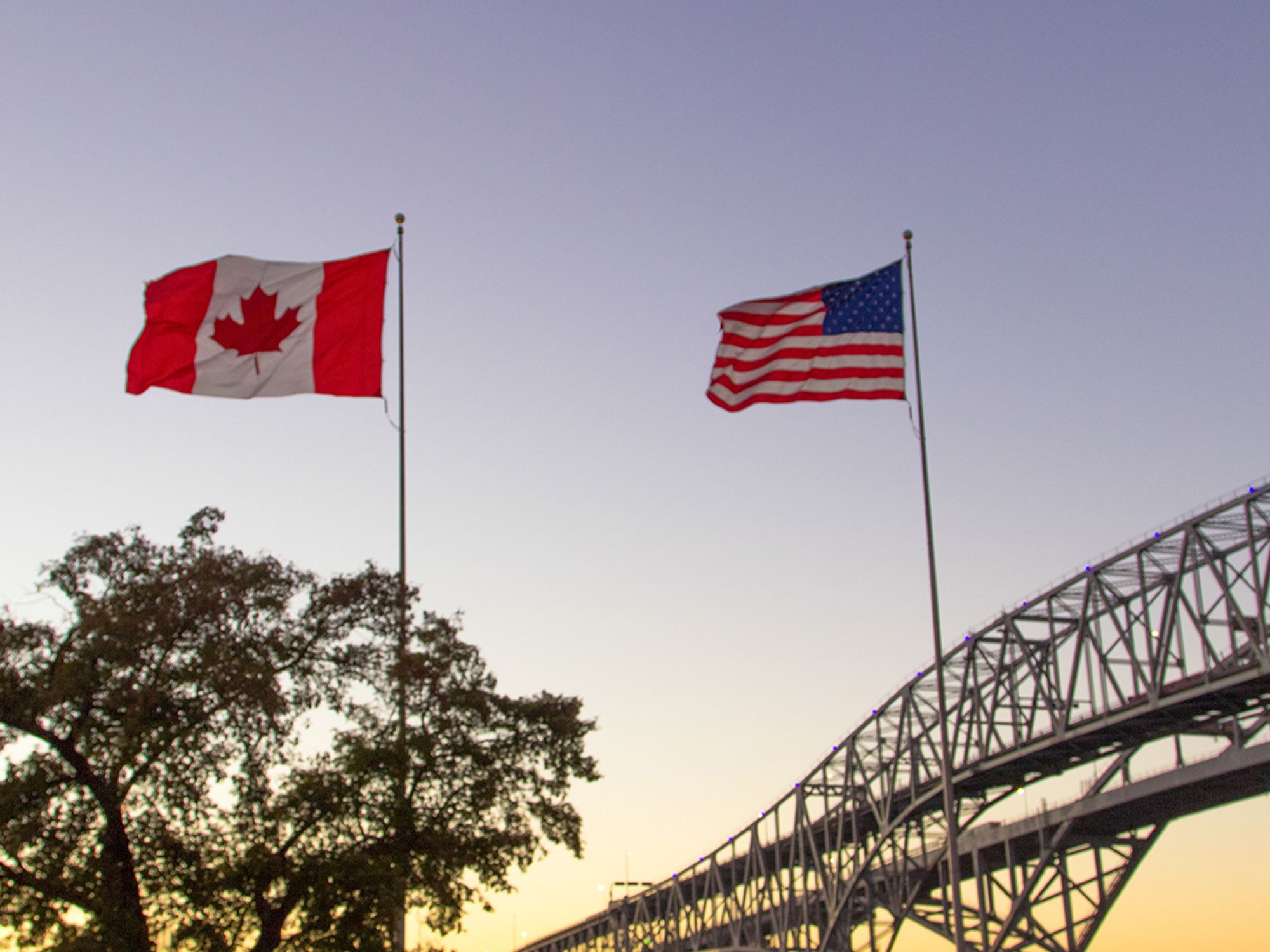Transporting goods from the United States into or through Canada

- There is reciprocity to a certain extent for hazardous materials or dangerous goods transported by road from the United States into or through Canada.
- A person may handle or transport dangerous goods by road vehicle from the United States to Canada or from the United States through Canada to a place outside Canada provided that certain regulations are met.
- The Transportation of Dangerous Goods (TDG) regulations have varying provisions regarding the transportation of dangerous goods by rail, by vessel or by air and reciprocity with the United States.
There is reciprocity to a certain extent for hazardous materials or dangerous goods transported by road from the United States into or through Canada.
Road/highway
Despite the requirements in Part 2 (Classification), Part 3 (Documentation) and Part 4 (Dangerous Goods Safety Marks), a person may handle or transport dangerous goods by road vehicle from a place in the United States to a place in Canada or from a place in the United States through Canada to a place outside Canada in accordance with the classification, marking, labelling, placarding and documentation requirements of 49 CFR, if:
- The information required on the shipping document is easy to identify, legible, in indelible print, in English or French and includes:
- when dangerous goods are transported to a place in Canada, the name and address of the place of business in Canada of the consignor,
- when dangerous goods are transported from a place in the United States through Canada to a place outside Canada, the name and the address of the place of business of each consignor, except that in this case the name and address may be shown on a separate document attached to the shipping document and is required only while that person is the consignor,
- (iii) the classification in Schedule 1 or in the UN Recommendations, for dangerous goods that have the letter “D” assigned to them in column 1 of the table to section 172.101 of 49 CFR, except for dangerous goods with the shipping name “Consumer commodity”, and
- (iv) if applicable, the information relating to the approved ERAP referred to in subsection 3.6(1);
- The person complies with the following sections in Part 3 (Documentation):
- Section 3.2, Carrier responsibilities,
- Section 3.7, Location of a shipping document: road, and
- Section 3.10, Location of a shipping document: storage in the course of transportation; and
- The labels and placards displayed for dangerous goods included in Class 2.3 or Class 6.1 are the labels and placards required in Canada’s regulations for these dangerous goods.
The allowance outlined above does not apply to dangerous goods that are forbidden for transport by Canada’s dangerous goods regulations, are not regulated by 49 CFR but are regulated by these regulations, or are given dangerous goods safety mark or packaging exceptions in 49 CFR that are not permitted by Canada’s dangerous goods regulations.
A person who handles or transports dangerous goods by road vehicle in accordance with an exemption issued under Subpart B of Part 107 of 49 CFR may do so from a place in the United States to a place in Canada or from a place in the United States through Canada to a place outside Canada if the exemption number appears on the shipping document. If there is a conflict between the requirements of Part 2 (Classification), Part 3 (Documentation), Part 4 (Dangerous Goods Safety Marks) or Part 5 (Means of Containment) and this exemption, the exemption prevails to the extent of the conflict.
Rail
See the Transportation of Dangerous Goods Regulations, Part 10 for provisions regarding the transportation of dangerous goods by rail and reciprocity with the United States.
Marine
See the Transportation of Dangerous Goods Regulations, Part 11 for provisions regarding the transportation of dangerous goods by vessel and reciprocity with the United States.
Air
See the Transportation of Dangerous Goods Regulations, Part 12 for provisions regarding the transportation of dangerous goods by air and reciprocity with the United States.
